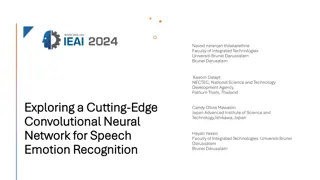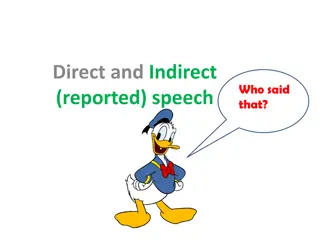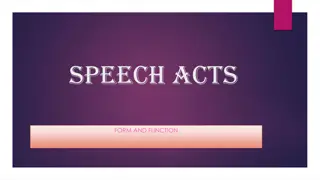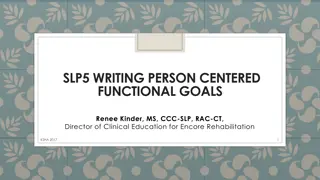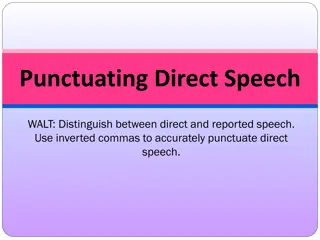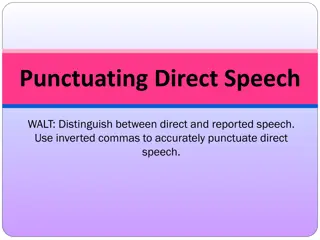Basic Elements of speech-making
Enhance your speech-making skills with insights into the basic elements of speech-making and the five canons of rhetoric. Dive into the process of invention, arrangement, style, memory, and delivery to craft compelling speeches that captivate your audience. Explore the key steps involved in each canon and learn how to effectively find, organize, and deliver your message with impact.
Download Presentation

Please find below an Image/Link to download the presentation.
The content on the website is provided AS IS for your information and personal use only. It may not be sold, licensed, or shared on other websites without obtaining consent from the author.If you encounter any issues during the download, it is possible that the publisher has removed the file from their server.
You are allowed to download the files provided on this website for personal or commercial use, subject to the condition that they are used lawfully. All files are the property of their respective owners.
The content on the website is provided AS IS for your information and personal use only. It may not be sold, licensed, or shared on other websites without obtaining consent from the author.
E N D
Presentation Transcript
Basic Elements of Speech- making
The Five Canons of Rhetoric (aka Steps in the Process)
The Five Canons of Rhetoric (aka Steps in the Process) Invention Arrangement Style Memory Delivery
The Five Canons of Rhetoric (aka Steps in the Process) Invention: Finding things to say Arrangement: Organizing the writing Style: Making it beautiful with artful language Memory: Rehearsing and preparing for spontaneity and responsibility Delivery: Using the voice and body in the moment
Invention: Finding things to Say Specific purpose: What you hope to accomplish in the speech for the audience.
Invention: Finding things to Say Specific purpose: What you hope to accomplish in the speech for the audience. Example: To persuade my audience to learn to play a musical instrument.
Invention: Finding things to Say Brain storm: To persuade my audience to learn to play a musical instrument.
Invention: Finding things to Say Brain storm: To persuade my audience to learn to play a musical instrument. Fun, social interactions, relaxation, discipline, helps improve memory and attention, joy of learning, learn about art, learn about history, potentially career opportunities, overcome stage fright, physical rehab from injuries, alternative to other less productive habits
Invention: Finding things to Say Organize your initial inventions into categories which can form main points/arguments
Invention: Finding things to Say Organize your initial inventions into categories which can form main points/arguments: 1. Cognitive benefits 2. Emotional benefits 3. Social benefits
Invention: Finding things to Say Produce a thesis or central idea by summarizing the main points:
Invention: Finding things to Say Produce a thesis or central idea by summarizing the main points: Central idea: You should consider learning a musical instrument because of the cognitive, emotional, and social benefits.
Invention: Finding things to Say Reasoned Argument (logos)
Invention: Finding things to Say Reasoned Argument (logos) Emotional Appeals (pathos)
Invention: Finding things to Say Reasoned Argument (logos) Emotional Appeals (pathos) Appeals to character, values, or ways of life (ethos)
Invention: Finding things to Say Aristotle calls these artistic elements/proofs Reasoned Argument (logos) Emotional Appeals (pathos) Appeals to character, values, or ways of life (ethos)
Invention: Finding things to Say Data Statistics Quotations from experts Testimony from witnesses Other facts, laws, and important information
Invention: Finding things to Say Aristotle calls these inartistic proofs Data Statistics Quotations from experts Testimony from witnesses Other facts, laws, and important information
Arrangement Make sure each main point is well developed (with its own introduction, development, and conclusion)
Arrangement Make sure each main point is well developed (with its own introduction, development, and conclusion) Main points should be distinct, comprehensive, and they should add up to the thesis.
Arrangement Make sure each main point is well developed (with its own introduction, development, and conclusion) Main points should be distinct, comprehensive, and they should add up to the thesis. Link your points with transitions that summarize and preview: ( Now that I ve told you about X, next I will tell you about Y.)
Arrangement Introductions need:
Arrangement Introductions need: 1. Grab the attention from the first line
Arrangement Introductions need: 1. Grab the attention from the first line 2. Reveal the topic in a line or two
Arrangement Introductions need: 1. Grab the attention from the first line 2. Reveal the topic in a line or two 3. Establish your credibility
Arrangement Introductions need: 1. Grab the attention from the first line 2. Reveal the topic in a line or two 3. Establish your credibility 4. Culminate in your thesis
Arrangement Conclusions need:
Arrangement Conclusions need: 1. Signal the end of the speech has arrived
Arrangement Conclusions need: 1. Signal the end of the speech has arrived 2. Summarize and reiterate the main ideas
Arrangement Conclusions need: 1. Signal the end of the speech has arrived 2. Summarize and reiterate the main ideas 3. Amplify the significance of the speech for this audience in this time and place.
Arrangement Conclusions need: 1. Signal the end of the speech has arrived 2. Summarize and reiterate the main ideas 3. Amplify the significance of the speech for this audience in this time and place. 4. End with a meaningful last line.
Style Aristotle argues that the two most important stylistic virtues in public speaking are clarity and appropriateness.
Style Aristotle argues that the two most important stylistic virtues in public speaking are clarity and appropriateness. Write for the ear not the eye.
Style Aristotle argues that the two most important stylistic virtues in public speaking are clarity and appropriateness. Write for the ear not the eye. Read your work ALOUD.
Style Aristotle argues that the two most important stylistic virtues in public speaking are clarity and appropriateness. Write for the ear not the eye. Read your work ALOUD. Avoid phrasing that might be distracting, too ambiguous, or bad for your ethos (e.g. gendered language, slang, etc.)
Memory Rehearse the ideas of the speech, rather than the specific wording.
Memory Rehearse the ideas of the speech, rather than the specific wording. Rehearse success (don t rehearse failure )
Delivery BREATHE
Delivery Body: alert upright posture, relaxed arms and hands, meaningful gestures
Delivery Body: alert upright posture, relaxed arms and hands, meaningful gestures Voice: Appropriate rate, pitch, volume, pauses
Delivery Body: alert upright posture, relaxed arms and hands, meaningful gestures Voice: Appropriate rate, pitch, volume, pauses Eyes: Panoramic and intimate
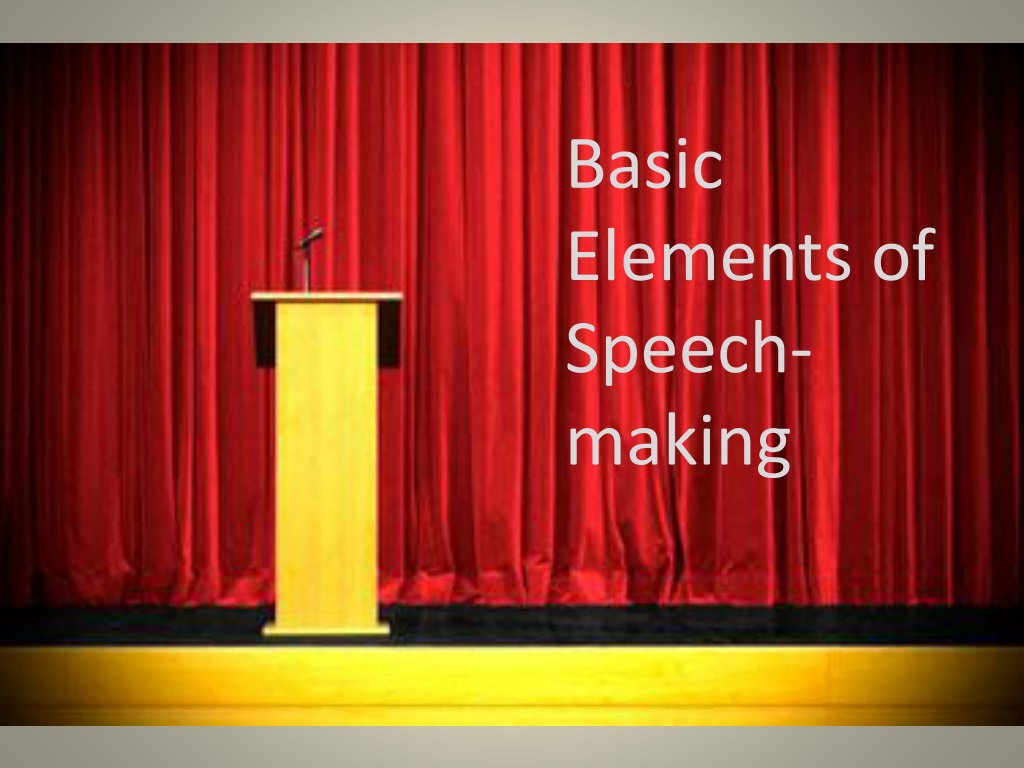


![Prevention and Combating of Hate Crimes and Hate Speech Bill [B.9B.2018]](/thumb/60513/prevention-and-combating-of-hate-crimes-and-hate-speech-bill-b-9b-2018.jpg)




